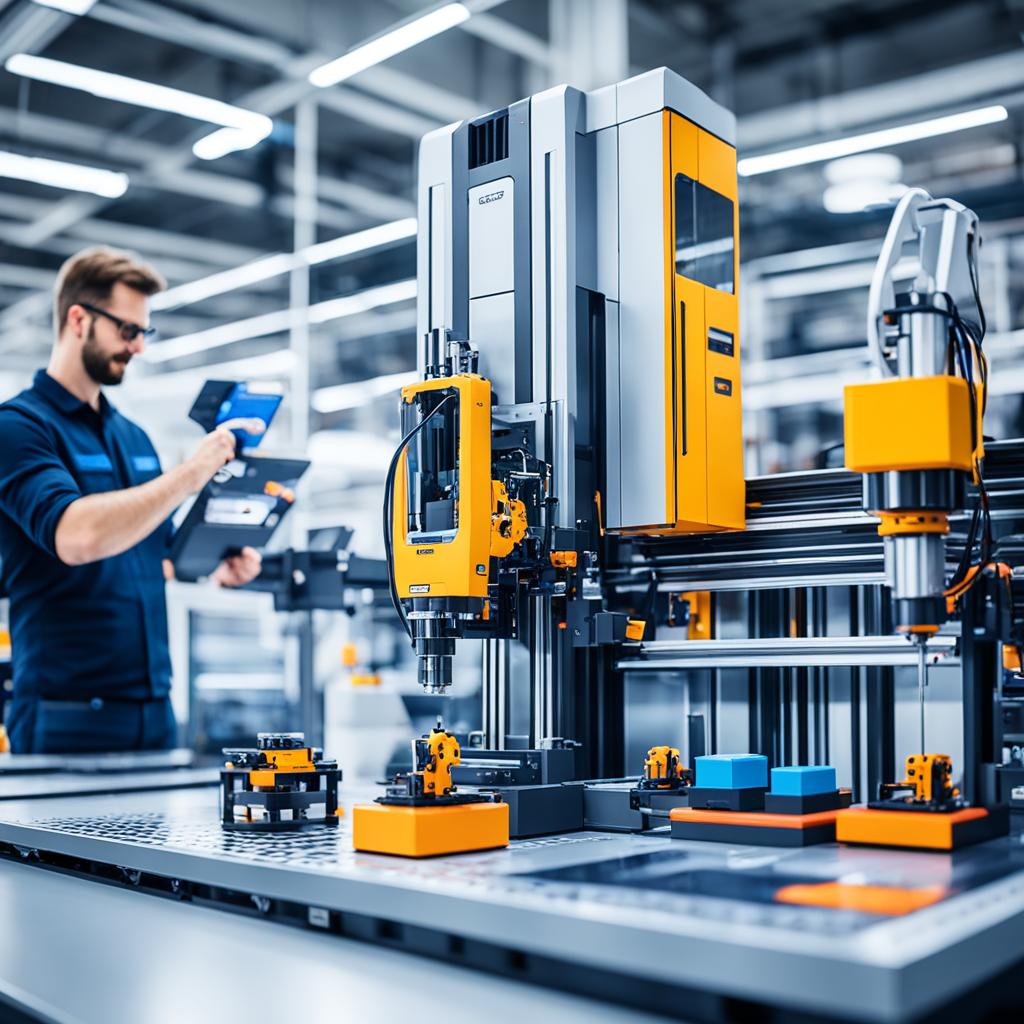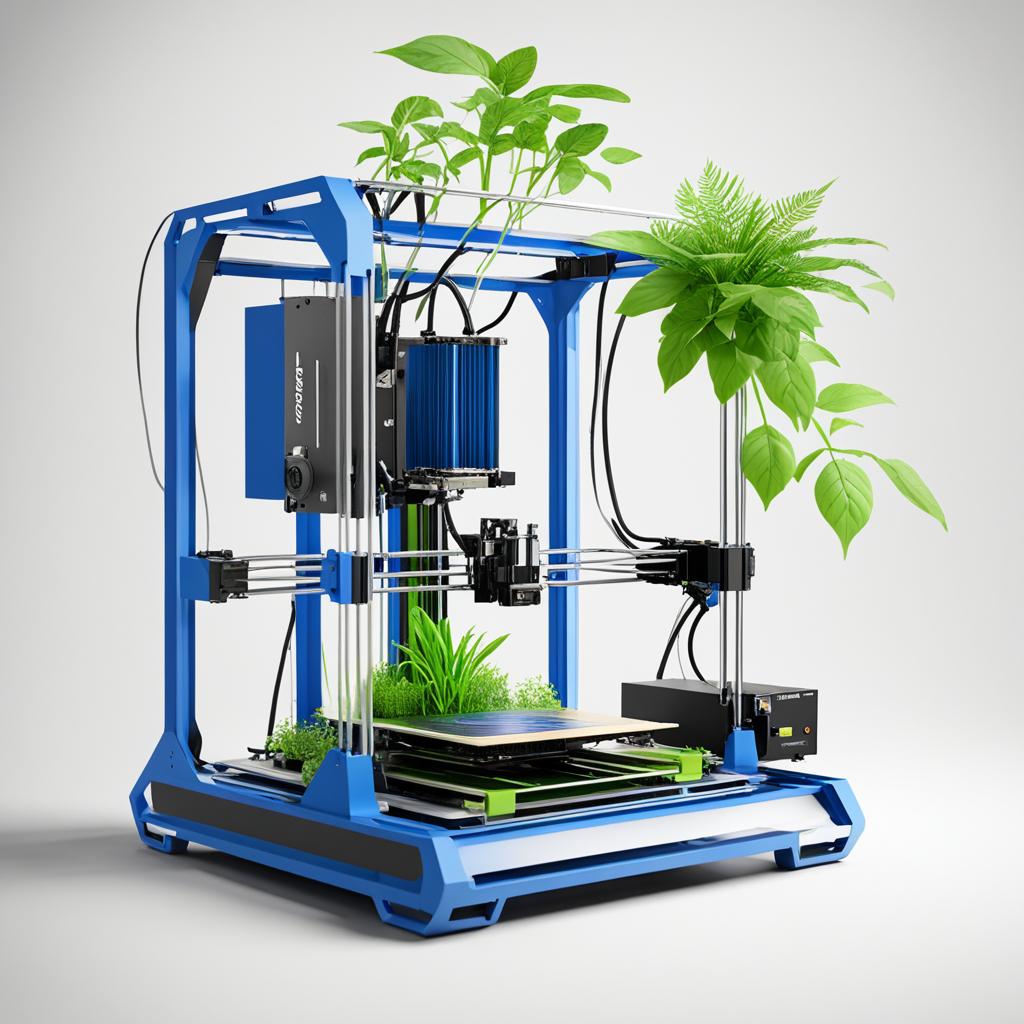3D printing is revolutionizing manufacturing processes, with the possibility of creating three-dimensional objects from CAD or 3D models. However, this technology also presents challenges that need to be addressed. Let's analyze the main challenges of 3D printing in today's market and how they can impact the future of this innovative technology.
Main points of the article:
- The Current Challenges of 3D Printing
- 3D Printing in Today's Market
- 3D Printing Technologies
- Advances in 3D Printing
- Future of 3D Printing
- Impact of 3D Printing in Industry
3D Printing Technologies
3D printing uses different technologies and methods to superimpose layers of material and create objects. This innovative technology allows the materialization of ideas from CAD or 3D models, enabling the manufacture of three-dimensional objects in a precise and efficient way.
There are several types of 3D printers available on the market, each using a specific technology to carry out the printing process. Some of the most common types are:
- Selective Laser Sintering (SLS): In this method, a high-powered laser is used to fuse particles of powdered material, such as nylon or polymers, layer by layer until the desired object is formed. This technology is known for its versatility and ability to print on a variety of materials.
- Fused deposition modeling (FDM): This technology is based on the extrusion of a filament of thermoplastic material, which is deposited layer by layer to create the object. It is one of the most common and accessible methods, being widely used in prototyping and manufacturing of functional parts.
- Stereolithography (SLA): In this method, a beam of ultraviolet light is used to solidify a photosensitive resin, also layer by layer, forming the desired object. This technology is known for its precision and ability to print objects with fine details.
Each of these technologies has its own advantages and disadvantages. Choosing the most suitable 3D printing technology for a given project will depend on the specific needs of the user, the type of material desired, and the complexity of the object to be printed.
In addition to the different types of 3D printers, there are several layer overlay methods used in 3D printing, such as heat fusion, light curing and polymerization. Each method has its own specific characteristics and applications.
3D printing offers a number of advantages, such as the possibility of creating complex and personalized objects, cost reduction in prototyping and rapid manufacturing of parts on demand. However, it also has some drawbacks, such as limited printing speed, material availability and the need to optimize printing processes to ensure the quality and precision of the objects produced.

The next section will explore the security risks associated with 3D printing and the measures needed to ensure protection during the printing process.
Security risks in 3D printing
3D printing presents significant security risks that must be considered when using this innovative technology. Several factors can compromise security during the printing process and affect the integrity of the objects produced.
See too:
Unauthorized modification of print files
When using print files in G-Code format, it is possible for unauthorized modification of these files to occur. This allows third parties to make changes without being detected, putting the quality and safety of the produced objects at risk.
Vulnerabilities in software and firmware
The software and firmware used in 3D printers may also have vulnerabilities that can be exploited by cyberattacks. These vulnerabilities can compromise the printer's security and expose it to additional risks.
Exposing devices to the Internet or insecure networks
Connecting 3D printing devices to the internet or insecure networks can significantly increase security risks. This could allow third parties to access and control the printer, compromising its integrity and purpose.
Theft of confidential print files or templates
3D printing involves the use of models and print files, which may contain confidential information, intellectual property, or proprietary designs. Theft of these models or files can have serious consequences, including the exposure of trade secrets or copyright infringement.
Printing parts for malicious purposes
The ease of 3D printing can also be exploited to produce parts for malicious purposes. This includes creating weapons, surveillance devices, or objects designed to cause physical harm or compromise the safety of others.
To mitigate these security risks in 3D printing, it is important to take preventive measures, such as ensuring the authenticity of print files, using up-to-date and secure software and firmware, and adequately protecting printing devices from exposure to insecure networks. In addition, it is essential to be attentive to the protection of confidential information and to take care when sharing print templates or files with third parties.

“3D printing offers countless possibilities, but it also brings with it challenges related to safety. It is essential to understand these risks and adequately secure the 3D printing process.”
Challenges of 3D printing in the food and nutrition industry
The use of 3D printing in the food and nutrition industry faces significant challenges that need to be overcome for this technology to become widely adopted. Some of the main challenges include:
- Cost and availability of ingredients: 3D food printing requires the use of specific ingredients, often produced on a smaller scale and at high costs. The availability of these ingredients can be an obstacle to the large-scale adoption of this technology.
- Low production speeds: 3D food printing is still in the early stages of development, which results in low production speeds. This limits its application on a large scale, especially in sectors that demand high production in a short space of time.
- Need for technological advances: For 3D food printing to become more accessible and efficient, it is necessary technological advances that enable the reduction of capital costs and the increase of production speed. In addition, it is important to invest in research and development to improve the quality of printed food.
Overcoming these challenges is essential for 3D food printing to become a viable reality in the food and nutrition industry. With technological advances and adequate investments, it is possible to develop solutions that allow large-scale production of 3D printed food, offering benefits such as personalization, waste reduction and greater efficiency in the production chain.
The adoption of 3D printing in the food and nutrition industry brings with it the promise of more sustainable food production tailored to the individual needs of consumers. However, it is essential to address existing challenges and seek solutions that ensure the quality, safety and accessibility of food produced through this innovative technology.
The future of 3D printing in industry
Despite the challenges faced, 3D printing has a promising future in the industry. With the constant technological advances, this innovative technology is expected to become increasingly accessible and efficient, providing significant benefits to various sectors.
One of the main application possibilities The potential of 3D printing in industry is to transform the supply chain. The ability to produce parts and products quickly and in a customized manner can revolutionize the way companies manufacture, distribute and deliver their products. This means that 3D printing can reduce production time, eliminate excess inventory and minimize material waste.
Furthermore, 3D printing has the potential to open up new business and innovation opportunities. With the ability to create complex and personalized objects, this technology enables the development of unique and personalized products according to customer needs. This can create a competitive advantage for companies, as they can offer unique products that meet specific market demands.

The advancement of 3D printing in the industry brings with it the promise of greater efficiency in production, cost reduction and the ability to create customized products quickly. This technology has the potential to positively impact the entire supply chain, from design and manufacturing to logistics and final product delivery.
With continued technological progress, 3D printing may become more accessible and efficient, overcoming current limitations such as printing speed and material costs. New techniques and materials are constantly being developed, expanding the possibilities application possibilities of this technology.
However, it is important to consider that the widespread adoption of 3D printing in the industry will require significant investment in equipment and personnel training. In addition, the integration of 3D printing into the supply chain will require a restructuring of production and logistics processes.
Main highlights
- Technological advances are making 3D printing more accessible and efficient
- A personalization and agility in production are possible with 3D printing
- Supply chain transformation is one of the main impacts of 3D printing on the industry
- Investment in equipment and training is necessary for wide-scale adoption
The future of 3D printing in industry promises to bring significant benefits, from optimizing manufacturing processes to creating innovative products. As technology continues to advance and current challenges are overcome, 3D printing is likely to establish itself as an indispensable tool for modern industry.
Applications of 3D printing in different sectors
3D printing has proven to be a versatile and innovative technology, with wide application in different sectors of industry. Its ability to produce complex and customized parts has revolutionized manufacturing processes and opened up new design possibilities. Let's explore some of the main applications of 3D printing in the automotive, medical, aerospace and engineering sectors.
Automotive sector
- 3D printing has been used in the manufacture of vehicle prototypes, allowing for faster and more economical development.
- Spare parts can be 3D printed, reducing component waiting times and inventory costs.
- Automotive design also benefits from 3D printing, enabling the creation of complex shapes and the integration of components into a single part.
Medical sector
- 3D printing is used in the manufacture of personalized prosthetics, adapted to the specific needs of each patient.
- Artificial organs and tissues can be 3D printed, offering hope to patients on transplant waiting lists.
- 3D printed anatomical models are used in complex surgeries, allowing greater precision and prior planning.
Aerospace sector
- 3D printing is used to manufacture lighter and stronger aerospace components, optimizing the performance of space vehicles.
- Complex structures, such as aircraft wings, can be 3D printed, reducing the amount of assembly and welding required.
- Prototypes of satellites and rockets can be produced quickly with 3D printing, accelerating the development and testing of these technologies.
Engineering sector
- 3D printing is used in the manufacture of functional models and prototypes for testing and project validation.
- Complex mechanical components can be produced in 3D, eliminating the need for assembly and reducing production time.
- A personalization of products is facilitated by 3D printing, allowing the creation of specific solutions for each application.
In the next segment, we will explore the Benefits and limitations of 3D printing, highlighting its advantages and the areas where there are still challenges to be overcome.
Benefits and limitations of 3D printing
3D printing offers a wide range of benefits that have driven its popularity and adoption across a range of industries. However, it is also important to consider the limitations and challenges associated with this revolutionary technology. In this section, we will discuss the benefits and limitations of 3D printing, covering aspects such as customization, cost reduction, higher production speed It is replication of complex parts.
Benefits of 3D Printing
One of the main benefits of 3D printing is the possibility of customization. This technology allows the creation of unique and customized products according to the needs and preferences of the customer. With 3D printing, it is possible to customize designs, shapes, sizes and even the functionality of the objects produced.
“The customization offered by 3D printing allows us to meet consumer demands in a unique and differentiated way, promoting an exclusive and satisfactory experience.”
Cost reduction is another major benefit of 3D printing. This technology makes it possible to minimize spending on traditional manufacturing processes, such as injection molding or CNC machining. In addition, 3D printing allows for the optimization of material use, avoiding waste and further reducing production costs.
A higher production speed This is a significant difference between 3D printing and conventional methods. With this technology, it is possible to produce complex items in a short space of time, enabling agility in the delivery of parts and products to customers.
The ability to replication of complex parts is a key benefit of 3D printing. With this technology, it is possible to print parts with intricate geometries and complex structures that would be extremely difficult or costly to produce using traditional manufacturing methods.
Limitations of 3D Printing
Despite the benefits, 3D printing also has some limitations that need to be considered. One of the main limitations is the availability of materials. Not all materials can be easily 3D printed, which limits the variety of options available.
Optimizing printing processes is another limitation that can impact efficiency and quality of results. Improper configuration of printing parameters such as speed, temperature and layer position can lead to defects in printed parts and requires in-depth technical knowledge to achieve optimal results.
While 3D printing offers significant benefits, it is important to carefully evaluate the limitations and challenges associated with this technology to determine its applicability in a given industrial context. Now, let's look at a comparison table that highlights the Benefits and limitations of 3D printing in a clear and concise manner.
| Benefits | Limitations |
|---|---|
| Product customization | Limited availability of materials |
| Reduction of production costs | Need to optimize printing processes |
| Higher production speed | |
| Replication of complex parts |
Conclusion
3D printing is transforming the industry and presents a innovation potential significant. The 3D printing technologies are enabling the creation of three-dimensional objects quickly and in a personalized way, offering advantages such as cost reduction and increased production speed. However, there are challenges that need to be overcome for this technology to become widely adopted.
One of the challenges is safety, as 3D printing presents risks of unauthorized modification of print files and possibility of printing parts for malicious purposes. Furthermore, in the food industry, the availability and cost of ingredients are challenges that must be addressed to make 3D printing viable on a large scale.
However, with continued technological advancements and solutions to these challenges, 3D printing has the potential to further revolutionize manufacturing processes. This technology has a positive impact on several industry sectors, such as automotive, medical, aerospace and engineering, enabling the production of complex and customized parts. By overcoming existing challenges, 3D printing will open up new possibilities for innovation and transformation in the industry.



